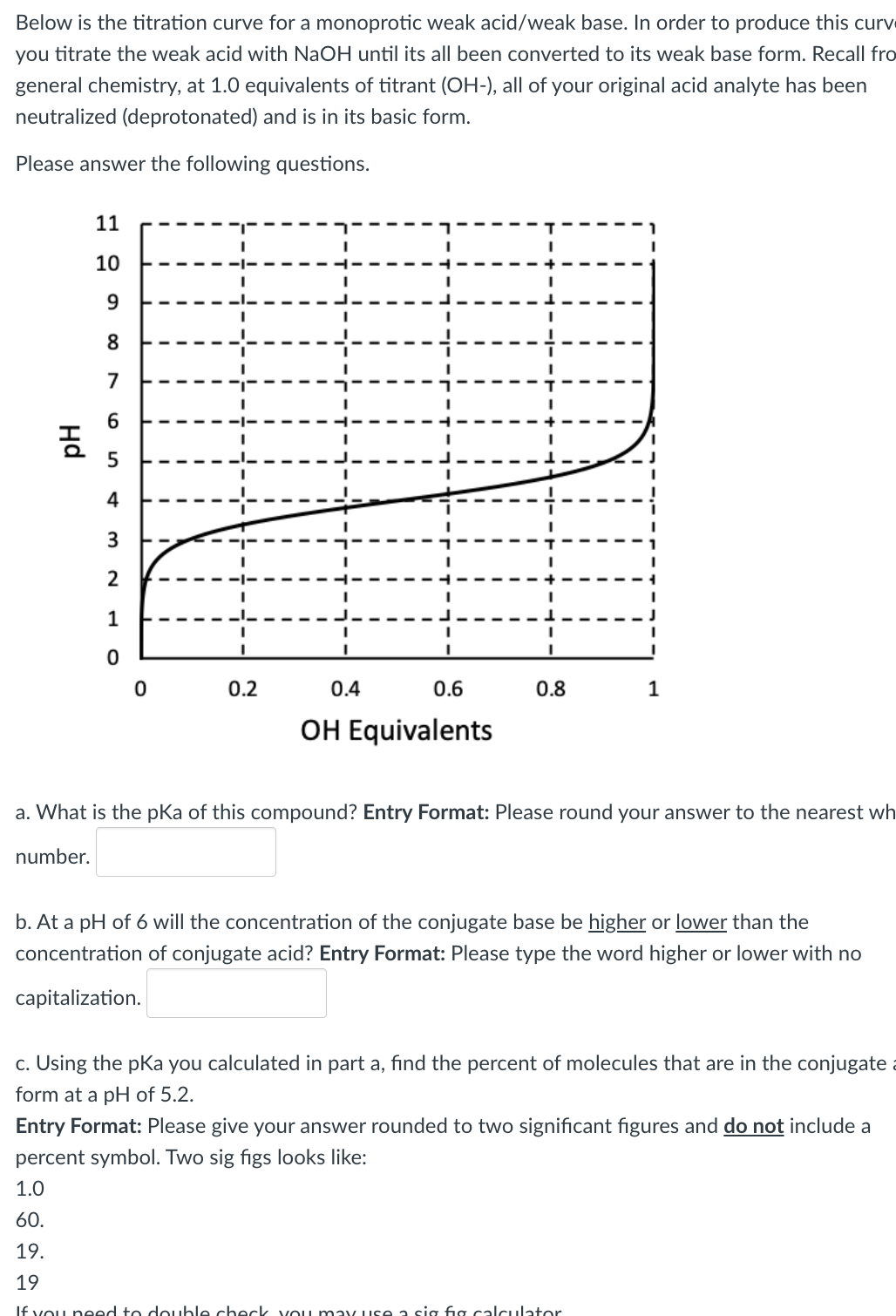Below is the titration curve for a monoprotic weak acid/weak base. In order to produce this curv you titrate the weak acid with NaOH until its all been converted to its weak base form. Recall fro general chemistry, at 1.0 equivalents of titrant (OH-), all of your original acid analyte has been neutralized (deprotonated) and is in its basic form. Please answer the following questions. 11 10 7 6. 5 3. 2 1 0.2 0.4 0.6 0.8 1 OH Equivalents a. What is the pKa of this compound? Entry Format: Please round your answer to the nearest wh number. b. At a pH of 6 will the concentration of the conjugate base be higher or lower than the concentration of conjugate acid? Entry Format: Please type the word higher or lower with no capitalization. c. Using the pKa you calculated in part a, find the percent of molecules that are in the conjugate form at a pH of 5.2. Entry Format: Please give your answer rounded to two significant figures and do not include a percent symbol. Two sig figs looks like: 1.0 60. 19. 19 Hd
Ionic Equilibrium
Chemical equilibrium and ionic equilibrium are two major concepts in chemistry. Ionic equilibrium deals with the equilibrium involved in an ionization process while chemical equilibrium deals with the equilibrium during a chemical change. Ionic equilibrium is established between the ions and unionized species in a system. Understanding the concept of ionic equilibrium is very important to answer the questions related to certain chemical reactions in chemistry.
Arrhenius Acid
Arrhenius acid act as a good electrolyte as it dissociates to its respective ions in the aqueous solutions. Keeping it similar to the general acid properties, Arrhenius acid also neutralizes bases and turns litmus paper into red.
Bronsted Lowry Base In Inorganic Chemistry
Bronsted-Lowry base in inorganic chemistry is any chemical substance that can accept a proton from the other chemical substance it is reacting with.

Trending now
This is a popular solution!
Step by step
Solved in 4 steps with 1 images








